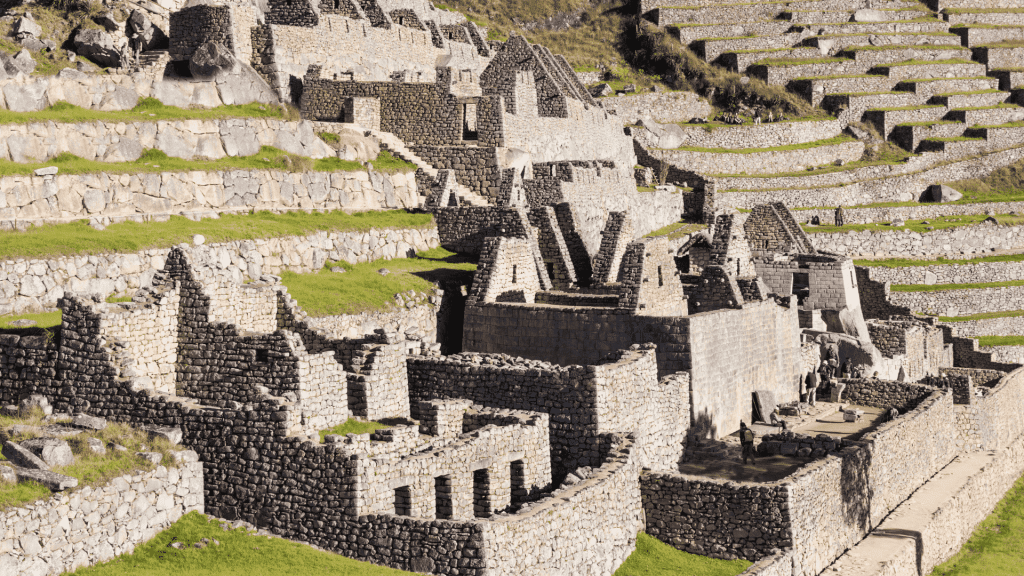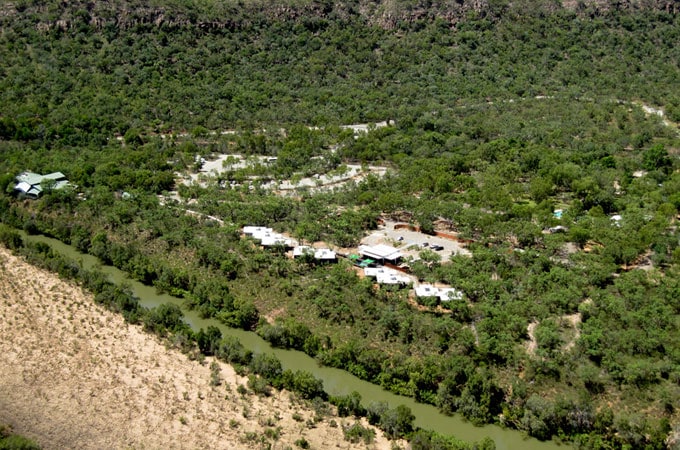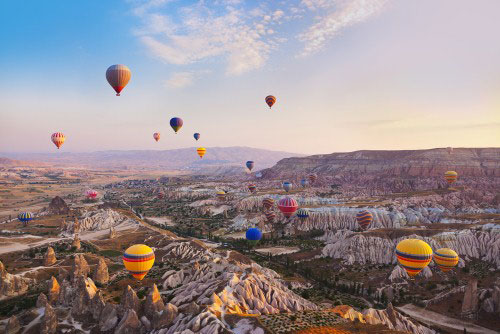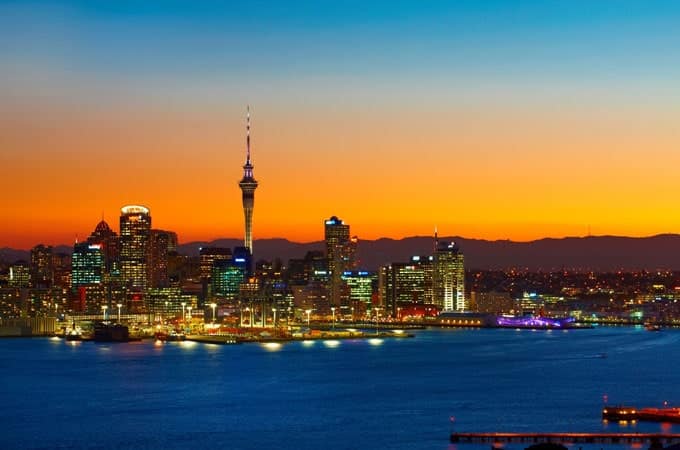History Unfolds at Peru’s Must-See Landmarks
Peru, with its ancient treasures, vibrant culture, and stunning natural beauty, showcases an impressive collection of famous landmarks reflecting its rich history and the dynamic interplay between tradition and modernity. In every corner of this South American nation, you’ll find a convergence of nature’s artistry and the imprint of ancient civilisations, promising an educational and exhilarating adventure. Ignite your wanderlust with our comprehensive guide to Peru’s must-see landmarks.
Machu Picchu & The Sacred Valley
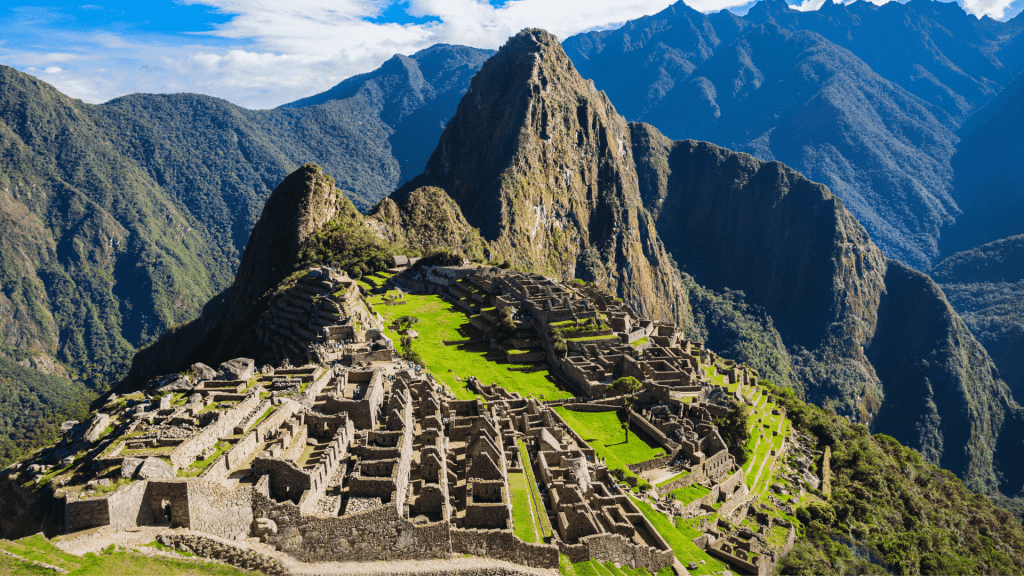
The awe-inspiring Sacred Valley, extending from Pisac to Ollantaytambo in the Andean highlands, is a picturesque region housing ancient Inca ruins, traditional villages, and breathtaking landscapes. It is a must-visit destination for anyone exploring Peru, serving as the gateway to the iconic Machu Picchu.
Perched high amidst the Andes Mountains, Machu Picchu is the focal point of this region, a testament to the Inca civilisation’s ingenuity and skill. This iconic landmark, veiled in mist and mystery, beckons travellers to step back in time and explore its well-preserved ruins.
This UNESCO World Heritage site can be accessed by hiking the Inca Trail, a journey through breathtaking scenery culminating in the unforgettable Sun Gate viewpoint. Alternatively, a scenic train ride offers a more leisurely route, transporting passengers to the mountain’s base, from where buses ascend to the ruins.
Machu Picchu’s significance transcends its architectural marvels; it epitomises Inca engineering, seamlessly blending harmony with nature and spirituality. The precision of its construction, accomplished without modern machinery, showcases the sophistication of its builders.
As a true bucket-list travel destination, Machu Picchu sparks the imagination, providing a window into the past and earning its place as a jewel of Peru, treasured by the entire world.
Cusco: A Wealth of Historical Landmarks
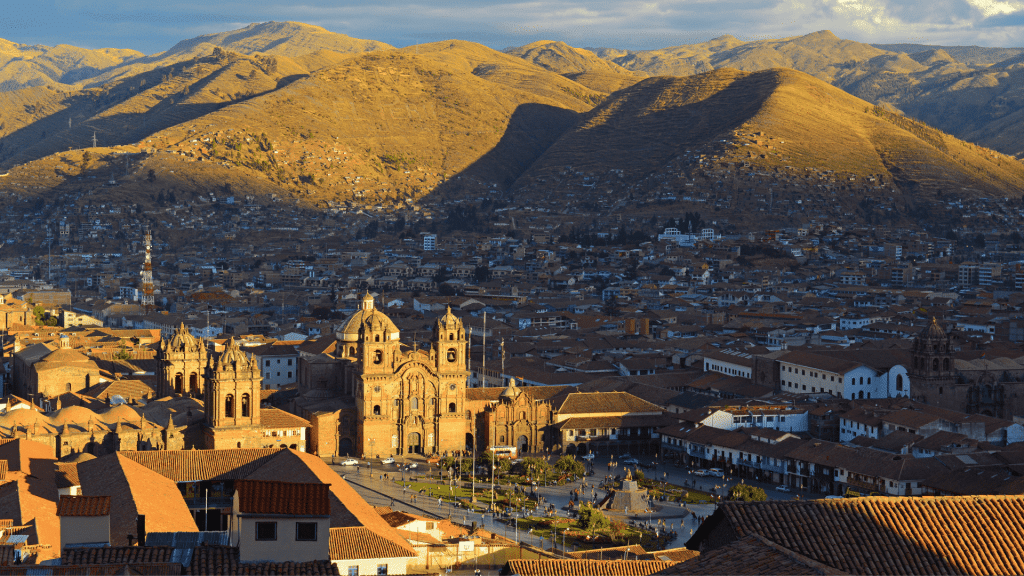
Cusco, once the heart of the vast Inca Empire, now serves as a crucial gateway for those seeking to unearth the splendours of Peru’s ancient world and welcomes travellers to explore the fascinating mix of ancient Incan traditions and colonial remnants. The city’s charming streets are home to many important Peruvian landmarks that offer a glimpse into Cusco’s rich cultural heritage.
The renowned Sacsayhuamán fortress, with its colossal stone walls, is a testament to the strategic brilliance of a lost civilization. Constructed by the Incas during the 15th century, under the rule of Sapa Inca Pachacuti and subsequent leaders, this fortified complex stands proudly on a steep hill, commanding a panoramic vista of the city and offering a sweeping view of the valley to the southeast. Archaeological examinations of pottery surface collections at Sacsayhuamán suggest that the initial habitation of this elevated site can be traced back to around 900 CE.
You can marvel at the intricate architecture of Qorikancha, the revered temple that once worshipped the sun god and later transformed into the colonial church of Santo Domingo.
Take a stroll through the vibrant Plaza de Armas, one of the religious and administrative centres of the Inca Empire, and surrounded by historical gems like the Cusco Cathedral and the Church of the Society of Jesus.
While in Cusco, beyond exploring the city’s rich historical landmarks, you can also immerse yourself in the local culture by visiting craft markets. The markets offer a variety of vivid textiles that showcase the stories of Andean heritage.
Cusco is known as the gateway to The Sacred Valley, which offers unparalleled adventures, including a visit to the iconic Machu Picchu. But don’t rush to these once-in-a-lifetime sites – spend a few days in Cusco to learn about the city’s fascinating history and culture, largely told through the city’s incredible landmarks.
Colca Canyon
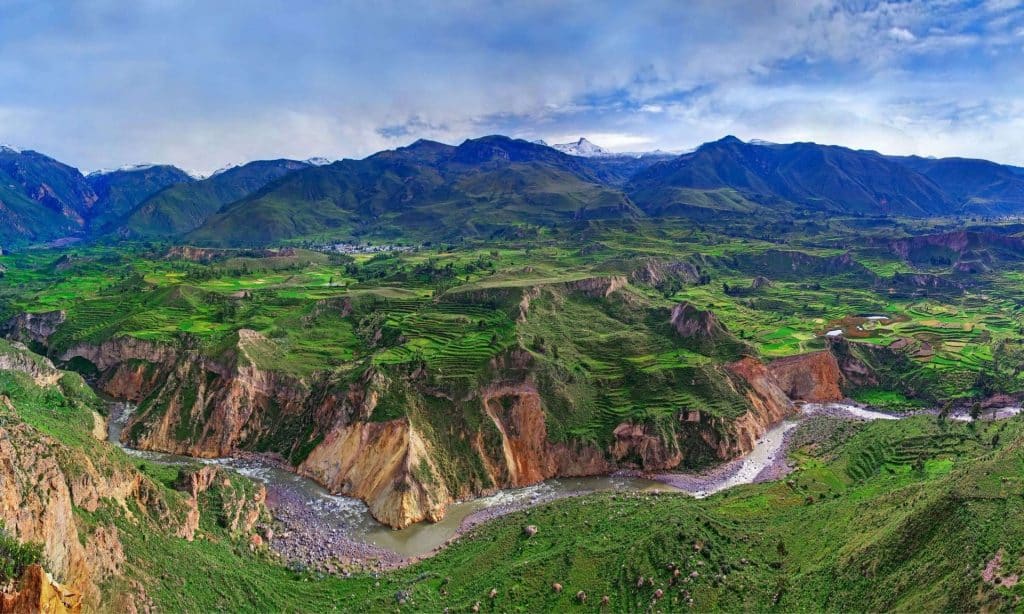
Bordered by towering cliffs and decorated with picturesque mountain villages and agricultural terraces established by Spanish conquistadors and plunging to depths nearly twice that of the Grand Canyon, Colca Canyon is one of the deepest canyons in the world. This immense geological formation spans the Andean mountain range in southern Peru, showcasing a breathtaking spectacle of natural wonders.
Exploring Colca Canyon can be done in two ways: from its edge or by undertaking a trek to its base. The former is the more straightforward option, providing a view of condors from the Mirador Cruz del Cóndor lookout. For those seeking a challenge, trekking the Colca Canyon—twice as deep as the Grand Canyon—offers an adventurous experience with stunning vistas at every turn.
While it is possible to trek Colca Canyon year-round, the dry season from approximately April to October is the recommended period. May and September are suggested for those who prefer thinner crowds, as the peak season is from June to August.
Arequipa, known as the White City for its structures (both modern as well as Spanish colonial) made from white volcanic sillar stone, is the nearest major city, just a three- to four-hour drive from the canyon.
Related article: A comprehensive travel guide for couples visiting Peru
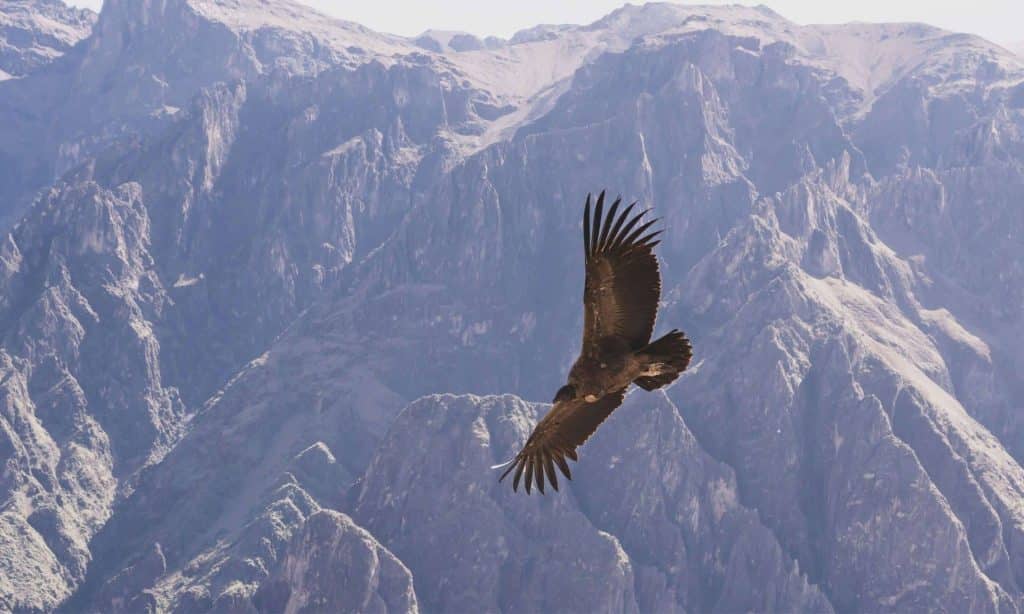
The Andean Condor is a common sight on visits to Peru’s Colca Canyon, an environment that allows them to show off wingspans of up to 11 feet. It’s become one of the world’s most popular places for birders and anyone interested in seeing endangered species in the wild. This revered bird is an Andes emblem, symbolising strength and freedom in Andean culture.
Chan Chan
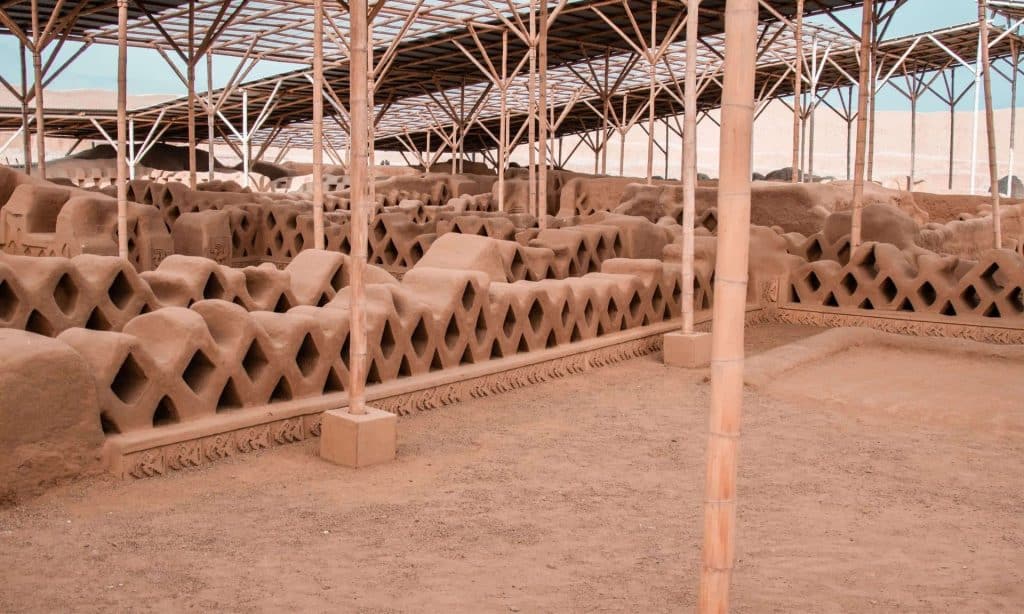
Chan Chan is the largest pre-Columbian city in South America and a UNESCO World Heritage site. Located near Trujillo on the north coast of Peru, Chan Chan was once the capital of the ancient Chimu civilisation.
As you explore this vast archaeological site, you’ll be amazed by the intricate adobe walls, ornate carvings, and ancient plazas that have withstood the test of time. Each step through the maze-like city will transport you back in time, offering a glimpse into the lives of the Chimu people and their impressive architectural skills.
Paracas National Reserve
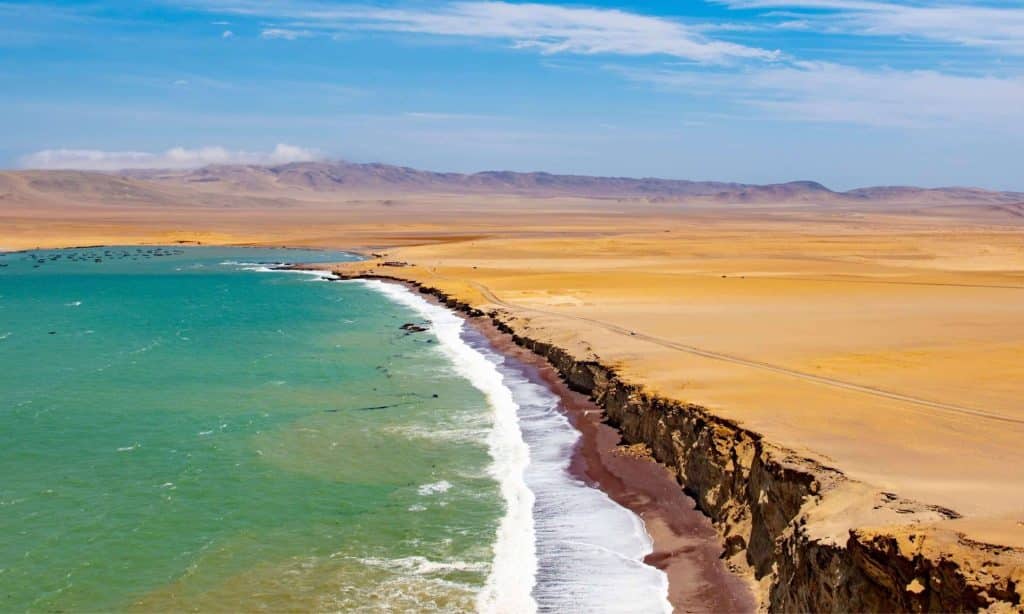
Paracas National Reserve is a coastal sanctuary boasting remarkable marine biodiversity unparalleled elsewhere along the Peruvian coastline. The reserve’s rich ecosystems host an array of sea lions, dolphins and many bird species, including the Humboldt penguins.
Located just a stone’s throw from Lima, Paracas is a convenient excursion for those craving natural beauty without straying far from Peru’s bustling capital. Its accessibility makes it an excellent addition to any Peruvian travel agenda that seeks a balance between urban exploration and nature’s charm.
Travellers crafting their journey through Peru’s wonders can seamlessly integrate Paracas into their itinerary. Pair it with the arid lines of the Nazca desert (below) or after basking in the history-steeped streets of Cusco for a diverse experience that captures the distinct facets of Peru’s enchanting landscape.
The Nazca Lines
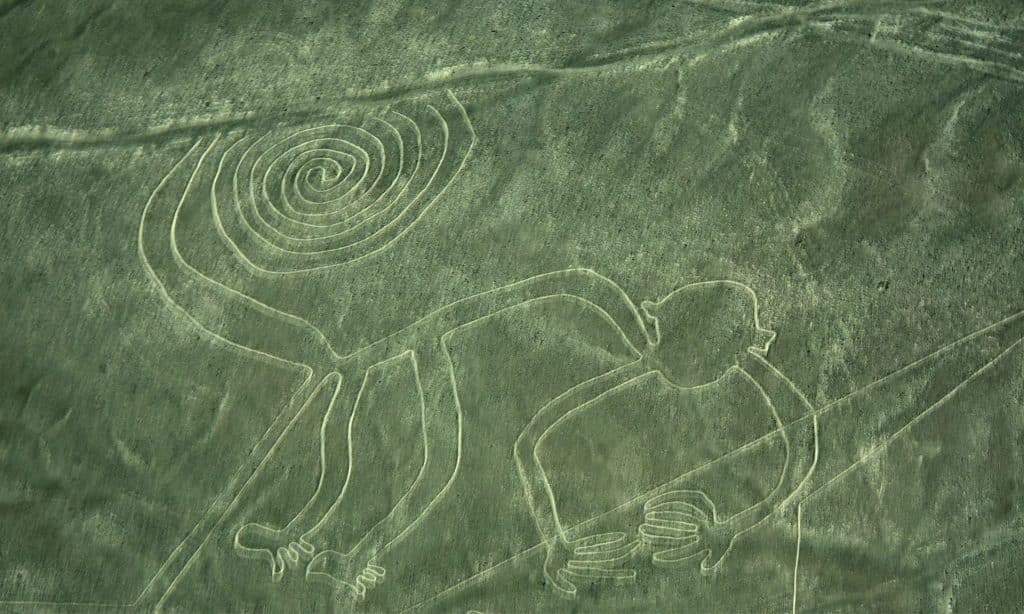
Next on our list are the Nazca Lines, a series of enormous geoglyphs etched into the desert floor of southern Peru. These intricate designs, best appreciated from the air, have puzzled scholars for years, leaving many fascinated by their purpose and origin. From simple geometric shapes to elaborate animal and plant figures, the Nazca Lines cover an area of over 500 square kilometres.
Although the reason behind their creation remains a mystery, exploring the Nazca Lines is an experience like no other. Whether you take a scenic flight or climb to a designated viewing platform, the Nazca Lines will leave you in awe of the ancient civilisations that once inhabited this region.
Tombs of Sipan
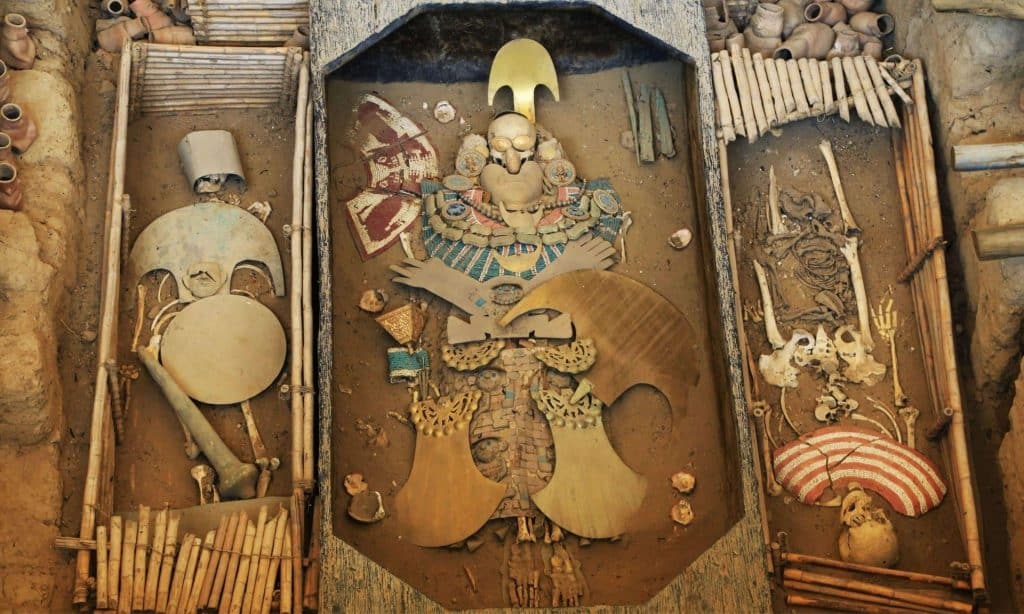
For history buffs, the Tombs of Sipan are a must-visit landmark in Peru. Located near the city of Chiclayo, these ancient tombs were discovered in 1987 and considered one of the most important archaeological finds in the Americas. The tombs are believed to belong to the Moche civilisation, which thrived in the region between 100 and 800 AD.
The primary tomb of the Lord of Sipan, dating back to around A.D. 350, serves as the site’s focal point. In 1988, a deeper royal tomb revealed the Old Lord of Sipan, buried approximately 300 years earlier. The mound’s mysterious history, including grave robberies, continues to confound archaeologists. Another tomb emerged in 2007, with further potential discoveries awaiting revelation.
Believed to belong to the Moche civilisation thriving between 100 and 800 AD, the tombs house a rich assortment of treasures, including gold, silver, ceramics, and intricate jewellery. These artifacts provide invaluable glimpses into the culture, art, and rituals of the Moche people.
Visitors can delve into the on-site museum, established in 2002, showcasing the stunning items unearthed from the tombs, offering an immersive experience into the captivating history of this ancient civilisation.
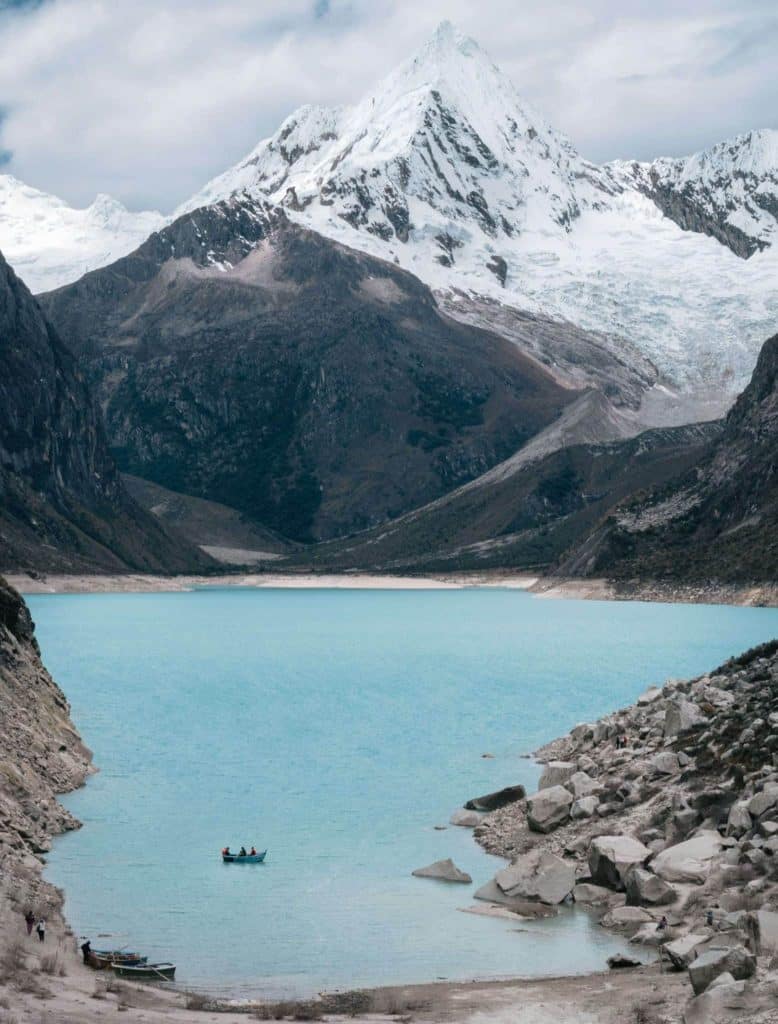
Huascarán National Park is a stunning testament to the immense power of the Andes mountain range, offering breathtaking views of towering peaks, including the park’s namesake, Huascarán, which reaches a staggering height of over 22,000 feet, making it the tallest peak in Peru.
The park’s vast and diverse territory is covered in impressive glaciers and is home to various ecosystems. It is a UNESCO Biosphere Reserve and World Heritage Site, highlighting its global significance.
Adventurers can discover a paradise here, as the park offers a plethora of activities such as trekking, mountain climbing, and skiing and boasts a variety of trails, ranging from leisurely walks that allow you to get up close and personal with crystal-clear lakes to challenging hikes that lead to snow-capped peaks.
The park is also a sanctuary for high-altitude wildlife, including the elusive spectacled bear and the majestic Andean condor, set against a backdrop of alpine meadows and cloud forests.
Titicaca Lake
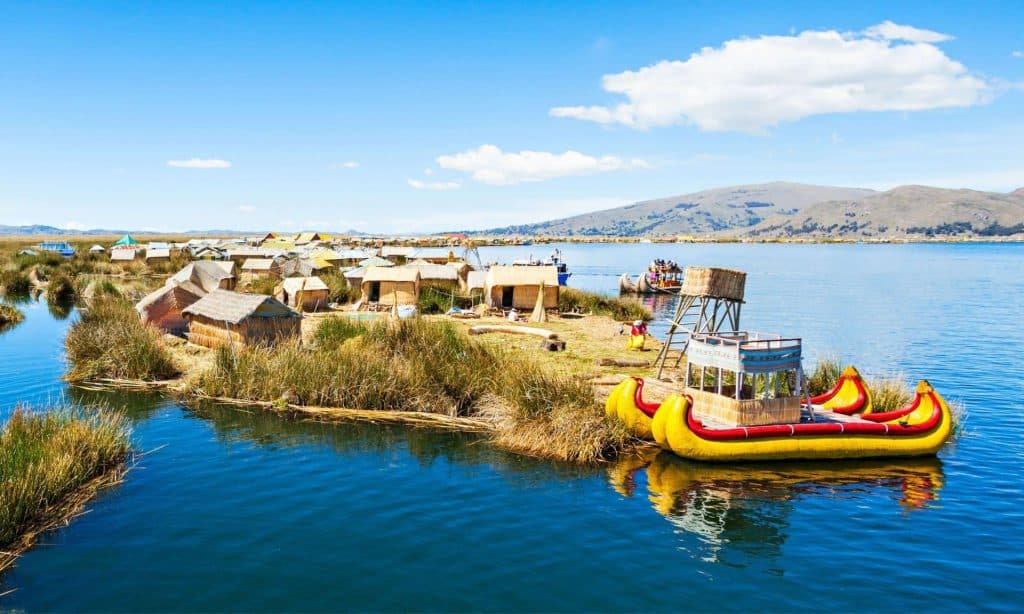
Lake Titicaca, nestled between Peru and Bolivia, is South America’s largest and the world’s highest navigable lake, standing at an altitude of over 3,800 meters. According to Inca beliefs, the Island of the Sun, one of the lake’s sacred isles, was the birthplace of their first emperor, who was born from the sun god, Inti.
The region features the ingenious Uros Islands, man-made isles inhabited by the Uros people and constructed from totora reeds, abundantly growing in the lake. These reeds are vital for the Uros community. They are used in crafting boats, houses, roofs, and various items, with the tribe using traditional techniques of weaving and building.
Lake Titicaca offers activities like kayaking and community tourism on islands like Taquile or Amantaní. While there, be sure to try some authentic cuisine and take the time to gain a deeper understanding of the daily lives of the native inhabitants who have peacefully occupied Titicaca’s islands for generations.
Gocta Falls
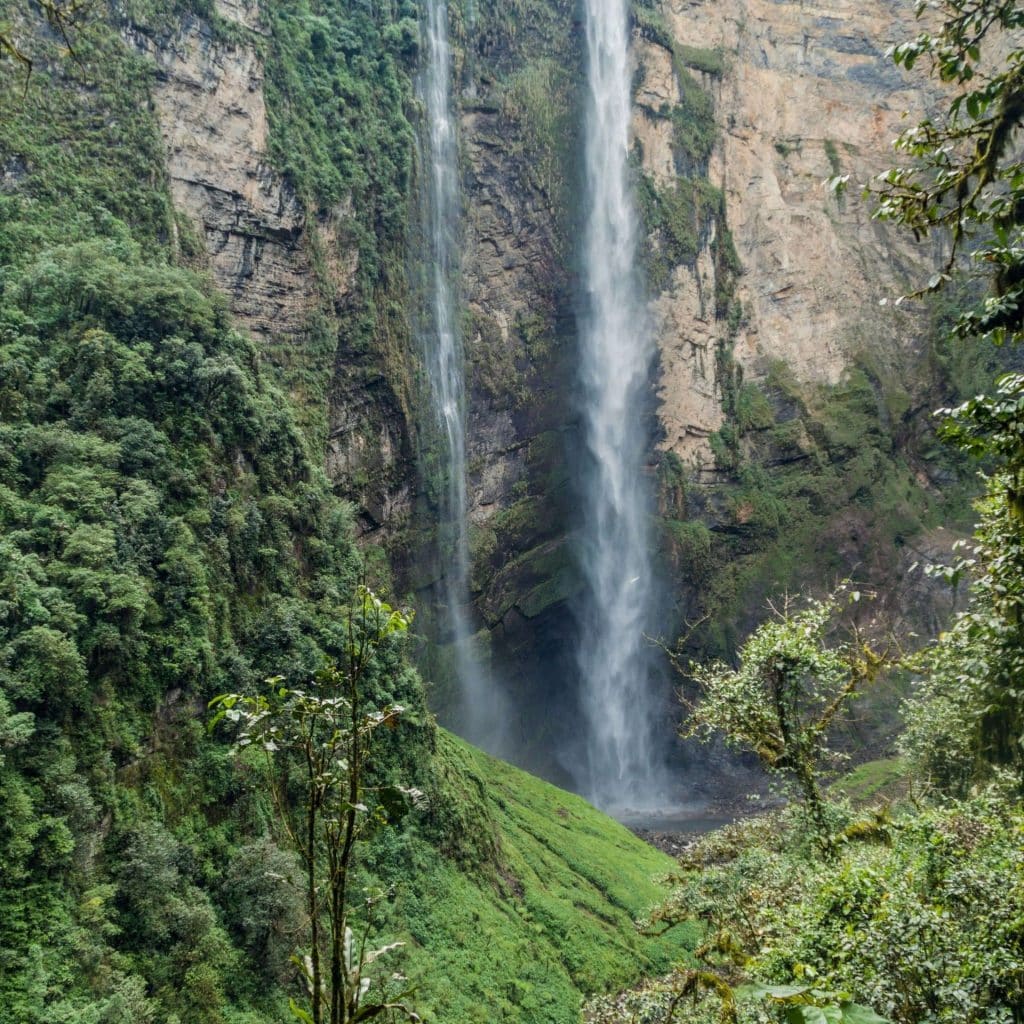
Get ready to be mesmerised by the enchanting beauty of Gocta Falls, one of the tallest waterfalls in the world. This hidden gem is located in the Amazonas region and remained unknown to the outside world until 2002, when it was first “discovered” by a German outsider. The waterfall is named after the closest settlement, and it has cultural and historical significance to the people living in the region.
As you hike through the lush cloud forest, the sound of rushing water will guide you to the breathtaking sight of Gocta Falls, cascading down from a towering height of 771 meters. The misty spray and the vibrant green surroundings create a magical atmosphere that will make you feel like you’ve stepped into a fairytale.
To reach the Gocta Waterfall, your journey begins in the secluded Amazonas region of Peru, with four potential routes originating from Lima, passing through the cities of Jaén, Tarapoto, Chiclayo, or Chachapoyas.
Whether you admire the falls from a distance or take a refreshing swim in the natural pools below, Gocta Falls is a must-visit destination for nature enthusiasts and adventure seekers alike.
Kuélap
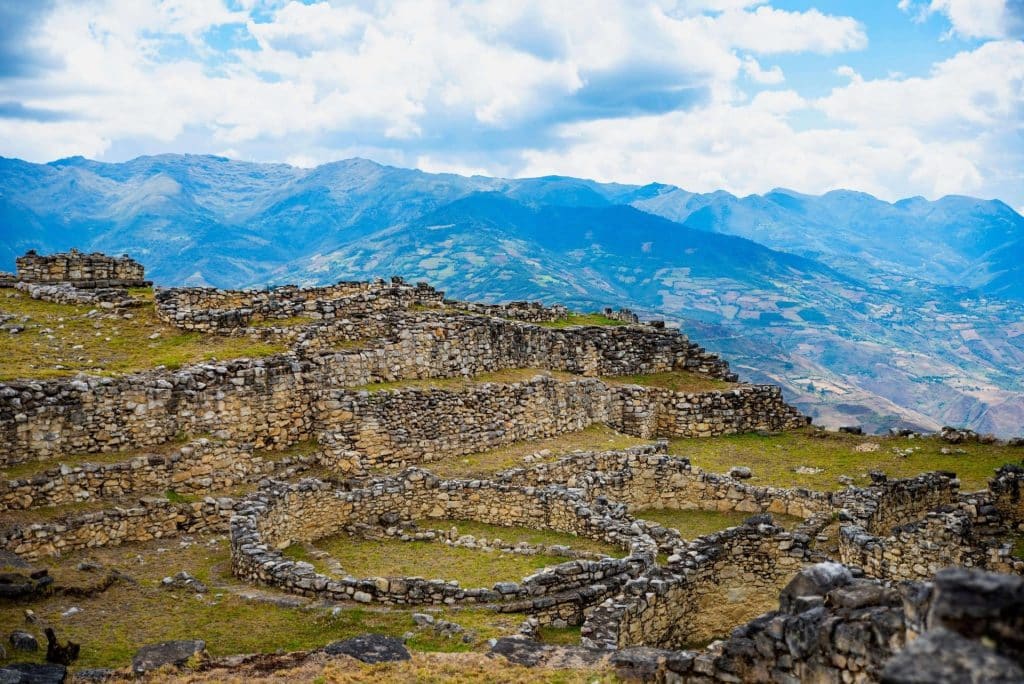
Nestled in Peru’s northern highlands, the fortress of Kuélap is an ancient marvel perched at 3000m (9842ft) above sea level, acting as the gateway to the Amazonas region. Kuélap, with its massive stone walls and intricate murals, remained undiscovered until the 1850s and gained serious attention only in the late 20th century. Today, it is often dubbed the “Machu Picchu of the North.”
This expansive stone ruin, constructed by the Chachapoya people, covers an area of 15 acres and is one of the largest pre-Inca sites in the Americas. It features more than 400 circular buildings that can be reached by foot or cable car and provides stunning views of the verdant Utcubamba Valley.
The fortress, once home to warriors, shamans, and merchants, preserves the rich history of the Chachapoya civilisation amidst the enchanting beauty of the cloud forest, making it a compelling yet slightly off-the-beaten-path destination for those seeking an adventure into the Amazonas.
Iquitos – the Amazon Capital of Peru
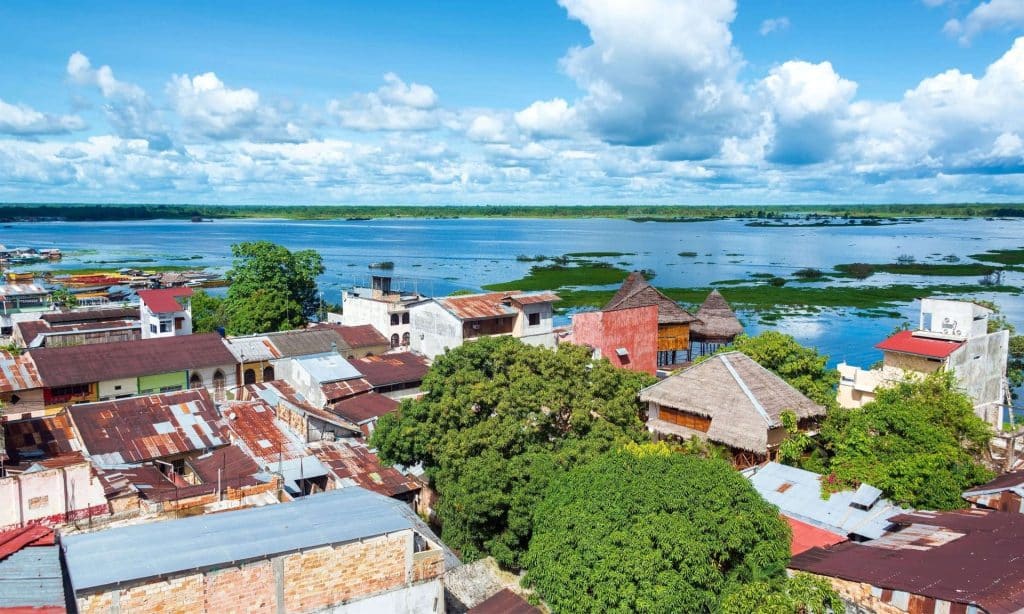
Iquitos is a vibrant city in the heart of the Peruvian Amazon, surrounded by lush jungle and considered the gateway into one of Peru’s most significant natural landmarks – the Peruvian Amazon Rainforest. It’s unique in that it’s not connected to Peru’s road network, which means that the only way to access it is by air or water, adding to the excitement and anticipation of the journey. This remote city attracts adventurous couples with its colourful markets, rustic architecture, and the magnetic allure of the Amazon’s wildlife.
Many immersive experiences await in Iquitos, from the sounds of exotic birds at dawn to the sight of pink river dolphins breaking the water’s surface. Delve into indigenous communities, learn about traditions sustained for generations, or explore conservation areas safeguarding the region’s rich biodiversity.
The vibrant city of Iquitos is bustling with energy and has a community well accustomed to living in the rainforest. Visitors can take river cruises that venture deep into the jungle or stay in eco-lodges, offering a more intimate experience with the surrounding natural wonders. One of the most unique experiences in Iquitos is visiting local Indigenous communities of the Peruvian Amazon – you can easily access these communities by boat within just an hour.
Embarking on a Journey to the Heart of Inca Country
Exploring Peru’s breathtaking landmarks goes beyond simply checking destinations off a list. It’s a transformative experience marked by a unique blend of cultural richness stretching from the Andes to the Amazon. Whether wandering through spiritual sites like Machu Picchu, connecting with indigenous communities, or conquering challenges like the Inca Trail, a trip to Peru and its incredible landmarks is a potentially life-changing journey.
